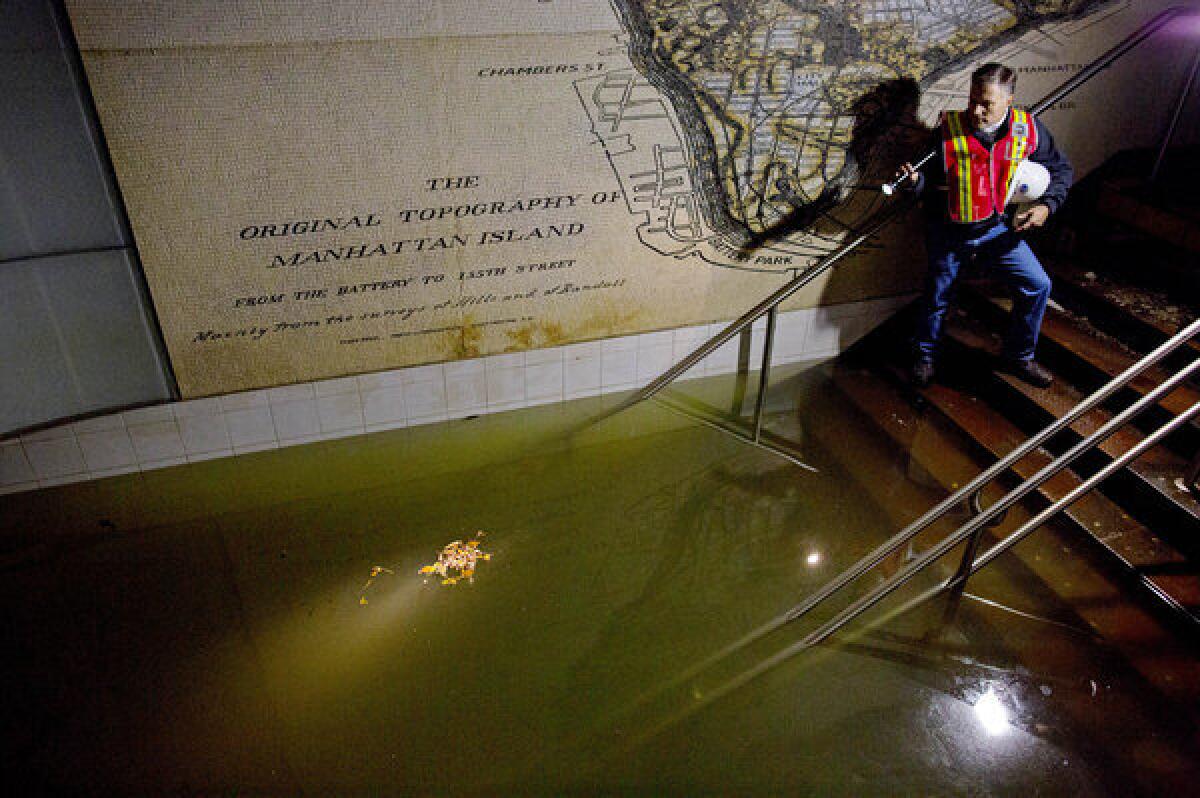Coastal flooding could cost cities $60 billion by 2050, study says

Coastal flooding could cost big cities more than $60 billion a year by mid-century, with losses jumping even more dramatically if nothing is done to counter rising sea levels and subsiding land, a new study has found.
A team of researchers analyzed data on flood exposure in 136 of the world’s largest coastal cities to project steep increases in economic losses, from an estimated $6 billion a year in 2005 to $52 billion by 2050 based on changes in population, economic growth and urbanization.
Even if those cities do as expected and invest in flood defenses to keep their level of exposure at what it is now, they can expect between $60 billion and $63 billion a year in losses by 2050 because of land subsidence and sea level rise, according to the study published Sunday in the journal Nature Climate Change.
If cities do not pay for expensive upgrades, their annual losses could jump to more than $1 trillion, a figure “so huge it only shows that doing nothing is not a realistic option,” said Stephane Hallegatte, a senior economist for the World Bank and lead author of the report.
“The bad side of it is that the risk is increasing, but the bright side is that there is a window of opportunity to drive urban development toward safe places,” Hallegatte said.
Researchers also ranked cities worldwide based on flood losses and found that the economic damage is not evenly distributed. In 2005, 31% of flood losses came from just three U.S. cities — Miami, New York, New Orleans -- according to the study, “because of their high wealth and low protection level.”
In the future, flood risk is expected to shift to cities that are big, fast-growing, poor, exposed to tropical storms and prone to land subsidence, the study says. To avoid staggering increases in flood damage, cities across the globe will have to adapt by raising dikes and other flood protections at a rate that outpaces rising sea levels, subsidence and socio-economic growth.
Most vulnerable cities in 2005 (By average annual flood losses)
1. Guangzhou (China)
2. Miami
3. New York-Newark
4. New Orleans
5. Mumbai (India)
6. Nagoya (Japan)
7. Tampa-St. Petersburg
8. Boston
9. Shenzhen (China)
10. Osaka-Kobe (Japan)
Most vulnerable cities in 2050 (By average annual flood losses)
1. Guangzhou (China)
2. Mumbai (India)
3. Kolkata (India)
4. Guayaquil (Ecuador)
5. Shenzhen (China)
6. Miami
7. Tianjin (China)
8. New York-Newark
9. Ho Chi Minh City (Vietnam)
10. New Orleans
Source: Nature Climate Change
Twitter: @tonybarboza




